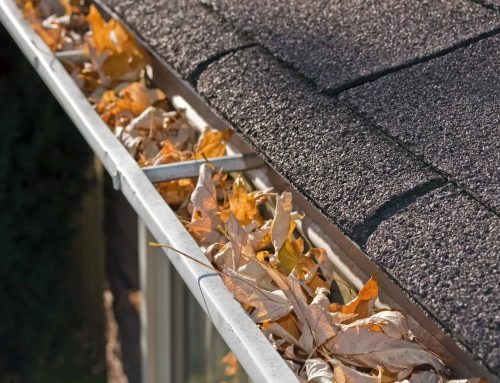Picture this: it’s February in Toronto, and you’re watching massive icicles form along your gutters while water backs up under your shingles. Or perhaps you’ve dealt with the frustration of frozen downspouts that create ice dams, causing water to overflow and potentially damage your foundation. These winter drainage nightmares are all too familiar for Greater Toronto Area homeowners, but they don’t have to be inevitable parts of Canadian home ownership.
Heating cables for gutters and downspouts represent a proactive solution to Toronto’s harsh winter drainage challenges. These specialized electrical systems work continuously throughout the cold months to prevent ice formation and maintain proper water flow, even during our most brutal cold snaps. While they might seem like a luxury, heating cables can actually save homeowners thousands of dollars in potential damage while providing peace of mind during Toronto’s unpredictable winter weather.
Understanding how these systems work and why they’re particularly beneficial in our climate can help you make an informed decision about protecting your home’s drainage system. The investment in heating cables often pays for itself through prevented repairs and the elimination of dangerous ice formations that threaten both your property and your family’s safety.
Understanding Heating Cable Technology
How Heating Cables Work
Heating cables, also known as heat tape or de-icing cables, are electrical resistance heating systems designed specifically for preventing ice formation in gutters and downspouts. These cables contain heating elements that generate controlled amounts of heat when electricity passes through them, maintaining temperatures just above freezing in the areas where they’re installed.
The cables work on a simple principle: by maintaining a consistent temperature above 32°F (0°C) in critical areas, they prevent water from freezing and forming blockages. This continuous heating allows melted snow and ice to flow freely through your eavestrough system, even during extended periods of sub-zero temperatures that are common in Toronto winters.
Modern heating cables incorporate advanced thermostat controls that automatically activate when temperatures drop below preset levels and shut off when warming occurs. This automated operation ensures energy efficiency while providing consistent protection throughout the winter season. Some systems even include sensors that monitor both temperature and moisture levels, activating only when conditions are right for ice formation.
Types of Heating Cable Systems
Self-regulating heating cables represent the most advanced option for residential applications. These cables automatically adjust their heat output based on surrounding temperatures—producing more heat when it’s colder and less when temperatures rise. This self-modulating feature makes them extremely energy-efficient and reduces the risk of overheating that can damage roofing materials.
Constant wattage cables provide consistent heat output regardless of temperature conditions. While less energy-efficient than self-regulating systems, they’re often more affordable and can be effective for specific applications where consistent heating is needed. These systems typically require more careful installation and monitoring to prevent overheating issues.
Radiant heating mats offer an alternative approach for larger areas, providing even heat distribution across wider sections of gutters or roof edges. These systems work well for homes with extensive ice dam problems or complex rooflines where traditional cables might be difficult to install effectively.
Installation Components and Considerations
Professional heating cable installations include several critical components beyond the cables themselves. Control systems manage when the heating activates, typically using ambient temperature sensors, moisture sensors, or timer controls. Quality control systems prevent unnecessary energy consumption while ensuring protection when needed.
Mounting hardware must be specifically designed for exterior use and compatible with your gutter material. Proper mounting ensures cables remain in contact with gutters and downspouts while withstanding Toronto’s harsh weather conditions. Installation must also include appropriate electrical connections that meet local electrical codes and safety standards.
GFCI (Ground Fault Circuit Interrupter) protection is essential for all exterior electrical installations, including heating cables. This safety feature prevents electrical hazards from moisture contact—a particular concern in eavestrough applications where water and electricity are in close proximity.
Benefits for Toronto Climate Conditions
Preventing Ice Dam Formation
Toronto’s climate creates ideal conditions for ice dam formation, which occurs when heat from your home melts snow on your roof while gutters remain frozen. This process creates a cycle where melted water refreezes at the roof edge, building up layers of ice that can damage shingles, gutters, and even interior structures.
Heating cables break this cycle by maintaining open drainage pathways through gutters and downspouts. When melted snow reaches heated gutters, it continues flowing rather than freezing and creating blockages. This continuous drainage prevents the backup conditions that lead to ice dams and the associated water damage.
The prevention of ice dams protects multiple aspects of your home beyond just the eavestrough system. Interior damage from water infiltration, roof damage from ice expansion, and structural issues from repeated freeze-thaw cycles can all be avoided through proper heating cable installation.
Maintaining Drainage During Freeze-Thaw Cycles
Toronto’s winter weather patterns include frequent temperature fluctuations that create challenging conditions for drainage systems. Daytime temperatures may rise above freezing, causing snow to melt, while nighttime temperatures drop well below freezing, causing any standing water to freeze solid.
These freeze-thaw cycles can create progressive blockages in gutters and downspouts as each cycle adds more ice to existing formations. Heating cables maintain consistent temperatures that prevent these blockages from forming, ensuring that drainage continues regardless of temperature fluctuations.
The consistent drainage provided by heating cables also prevents the formation of dangerous icicles that can pose safety hazards to people and property. Large icicles can fall without warning, potentially causing injury or property damage, while their formation often indicates underlying drainage problems that can lead to more serious issues.
Protection Against Structural Damage
Frozen gutters and downspouts can cause significant structural damage through several mechanisms. Ice expansion can crack or split gutters, separate joints, or pull fasteners loose from fascia boards. The weight of accumulated ice can also cause gutters to sag or separate from the house entirely.
Heating cables prevent these problems by eliminating the conditions that cause ice accumulation. By maintaining flowing water rather than allowing freezing, they protect both the eavestrough system and the structural components that support it. This protection extends the life of your gutters and reduces the need for costly repairs or premature replacement.
The prevention of ice-related damage also protects your home’s overall water management system. When gutters and downspouts function properly throughout winter, they continue providing the foundation protection that prevents basement flooding and other moisture-related problems.
Energy Efficiency in Modern Systems
Contemporary heating cable systems incorporate energy-efficient technologies that minimize operating costs while maximizing protection. Self-regulating cables automatically adjust their power consumption based on conditions, using more energy only when greater heating is needed.
Smart control systems can further optimize energy usage by monitoring weather conditions and activating heating only when ice formation is likely. Some systems can even be integrated with home automation platforms, allowing remote monitoring and control that helps optimize both protection and energy consumption.
The energy costs of heating cables are typically much lower than the potential costs of ice damage repairs. When properly installed and controlled, these systems provide cost-effective protection that pays for itself through prevented damage and extended equipment life.
Installation and Maintenance Considerations
Professional Installation Requirements
Heating cable installation requires careful attention to electrical safety, proper routing, and compatibility with existing gutter systems. Professional installers understand the electrical codes that govern exterior installations and ensure that all connections meet safety standards. They also have experience with different gutter materials and can select appropriate mounting methods that won’t compromise system integrity.
The installation process involves strategic cable placement to ensure effective ice prevention while minimizing energy consumption. Cables must be properly secured to prevent damage from wind, ice, or debris while maintaining good thermal contact with gutters and downspouts. Professional installers also ensure proper drainage around cable installations to prevent water accumulation that could cause electrical hazards.
Electrical connections for heating cables must be performed by qualified electricians familiar with exterior installation requirements. These connections typically involve dedicated circuits with appropriate overcurrent protection and GFCI safety features. Professional installation ensures compliance with local electrical codes and provides the manufacturer warranties that protect your investment.
Maintenance and Monitoring
While heating cables are relatively low-maintenance systems, regular inspection ensures optimal performance and identifies potential issues before they become problems. Visual inspections should check for damaged cables, loose connections, or areas where cables may have shifted away from proper contact with gutters.
Seasonal maintenance typically involves cleaning debris from around cables and checking that mounting hardware remains secure. Snow and ice removal should be done carefully to avoid damaging cables, and any concerns about cable performance should be addressed promptly by qualified technicians.
System monitoring can identify performance issues before they compromise protection. Many modern systems include diagnostic features that alert homeowners to problems, while smart controls can provide performance data that helps optimize system operation.
Cost Considerations and ROI
The initial investment in heating cables varies depending on system complexity, home size, and specific installation requirements. However, this investment should be evaluated against the potential costs of ice damage, which can include gutter replacement, roof repairs, interior water damage, and foundation issues.
Operating costs for heating cables are generally reasonable, particularly with energy-efficient self-regulating systems. The seasonal operation and automatic controls mean that energy consumption occurs only when protection is needed, making these systems cost-effective for most Toronto area homes.
The return on investment for heating cables often becomes apparent within the first few years of operation through prevented damage and reduced maintenance requirements. Many homeowners find that the peace of mind and elimination of winter drainage concerns justify the investment regardless of pure financial considerations.
Choosing the Right System for Your Home
Assessing Your Specific Needs
Toronto area homes face varying degrees of ice and drainage challenges based on factors including roof design, home orientation, tree coverage, and local microclimate conditions. Homes with complex rooflines, northern exposures, or histories of ice dam problems may benefit from more comprehensive heating cable systems.
The size and configuration of your existing eavestrough system influences the type and extent of heating cables needed. Longer gutter runs may require different cable types or control strategies than smaller, simpler systems. Professional assessment can identify the most effective approach for your specific situation.
Consider your long-term plans for the property when selecting heating cable systems. If you’re planning roof replacement or major renovations, timing the installation to coordinate with other work can provide both cost savings and optimal integration with your home’s systems.
Integration with Existing Systems
Heating cables work best when integrated thoughtfully with your home’s existing drainage and electrical systems. This integration might involve coordinating with gutter guards, ensuring compatibility with existing downspout configurations, or planning electrical capacity for the additional load.
Some homes benefit from combining heating cables with other winter protection measures, such as improved attic insulation or ventilation modifications that reduce heat loss and ice dam formation. A comprehensive approach to winter drainage protection often provides better results than any single solution.
Professional Consultation and Planning
Given the complexity of electrical installation, drainage engineering, and local climate considerations, professional consultation provides valuable expertise in planning heating cable systems. Experienced contractors can assess your specific situation, recommend appropriate systems, and ensure proper installation that maximizes both safety and effectiveness.
Professional planning also considers future maintenance requirements and ensures that installations can be serviced effectively over their operational lifetime. This forward-thinking approach helps protect your investment and ensures continued performance throughout the system’s life.
Protecting Your Investment This Winter
Winter drainage challenges don’t have to be an inevitable part of Toronto homeownership. Heating cables offer a proactive solution that prevents ice-related damage while eliminating the safety hazards and maintenance headaches associated with frozen gutters and downspouts. The technology has evolved to provide energy-efficient, reliable protection that pays for itself through prevented damage and improved peace of mind.
As Toronto’s winters become increasingly unpredictable, with more frequent freeze-thaw cycles and extreme weather events, proactive drainage protection becomes even more valuable. Heating cables provide the consistency your drainage system needs to function effectively regardless of weather conditions.
If you’re tired of dealing with frozen gutters, dangerous icicles, or ice dam concerns, heating cables might be the solution you’ve been looking for. Ontario Downspout Service has extensive experience helping GTA homeowners protect their properties from winter drainage challenges. Our team can assess your specific situation and recommend heating cable solutions that provide effective protection while fitting your budget and home’s unique requirements.








